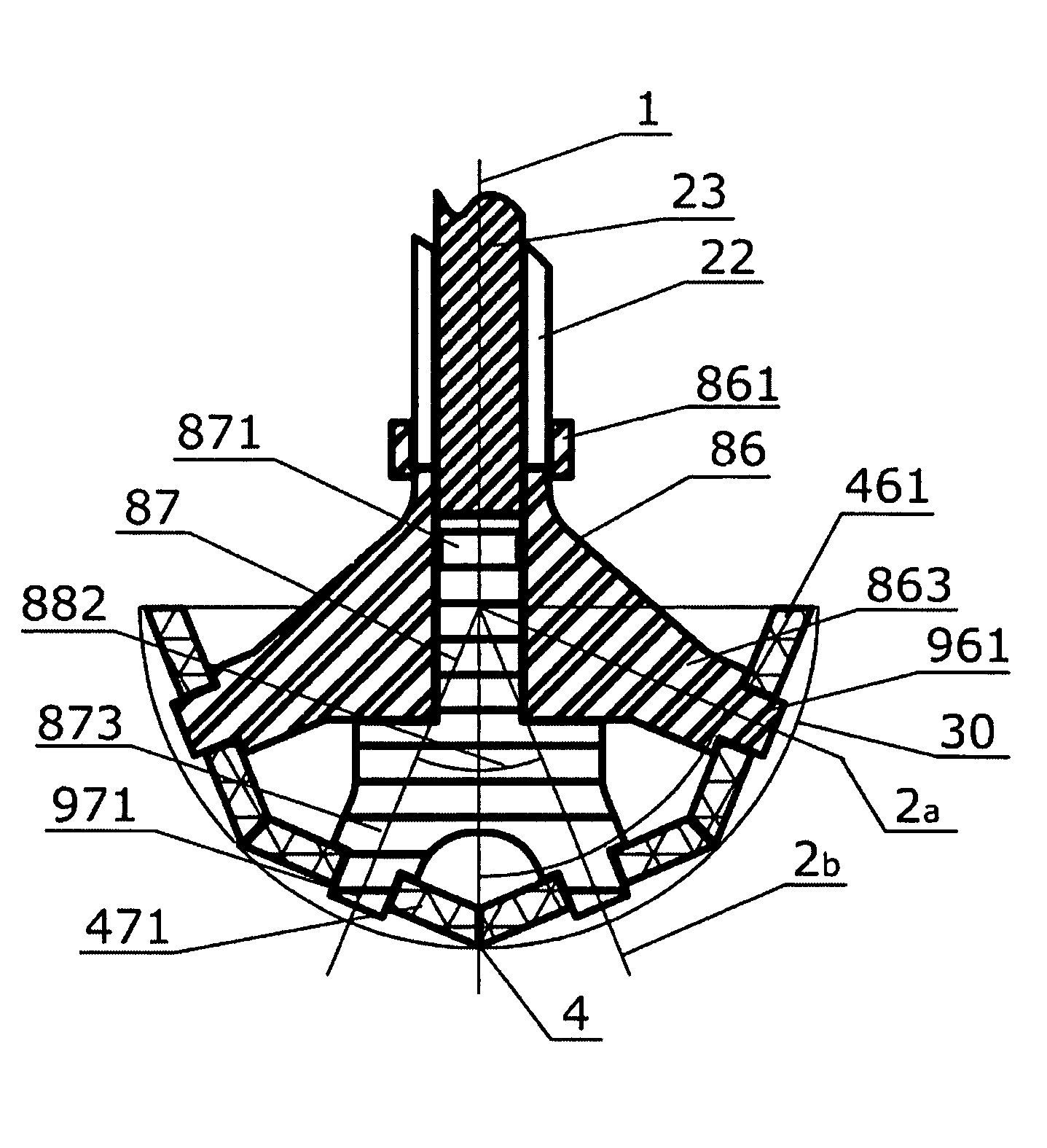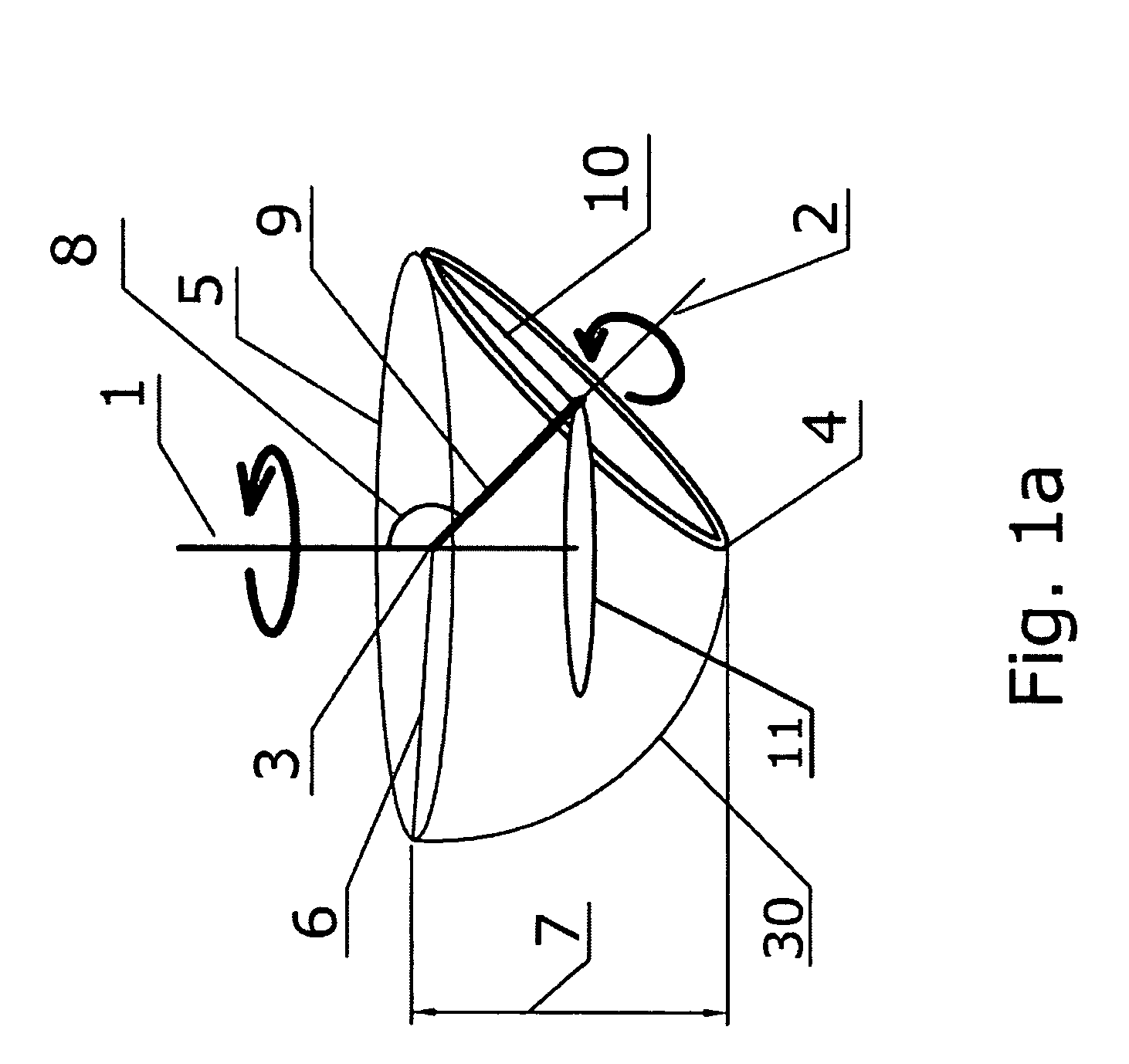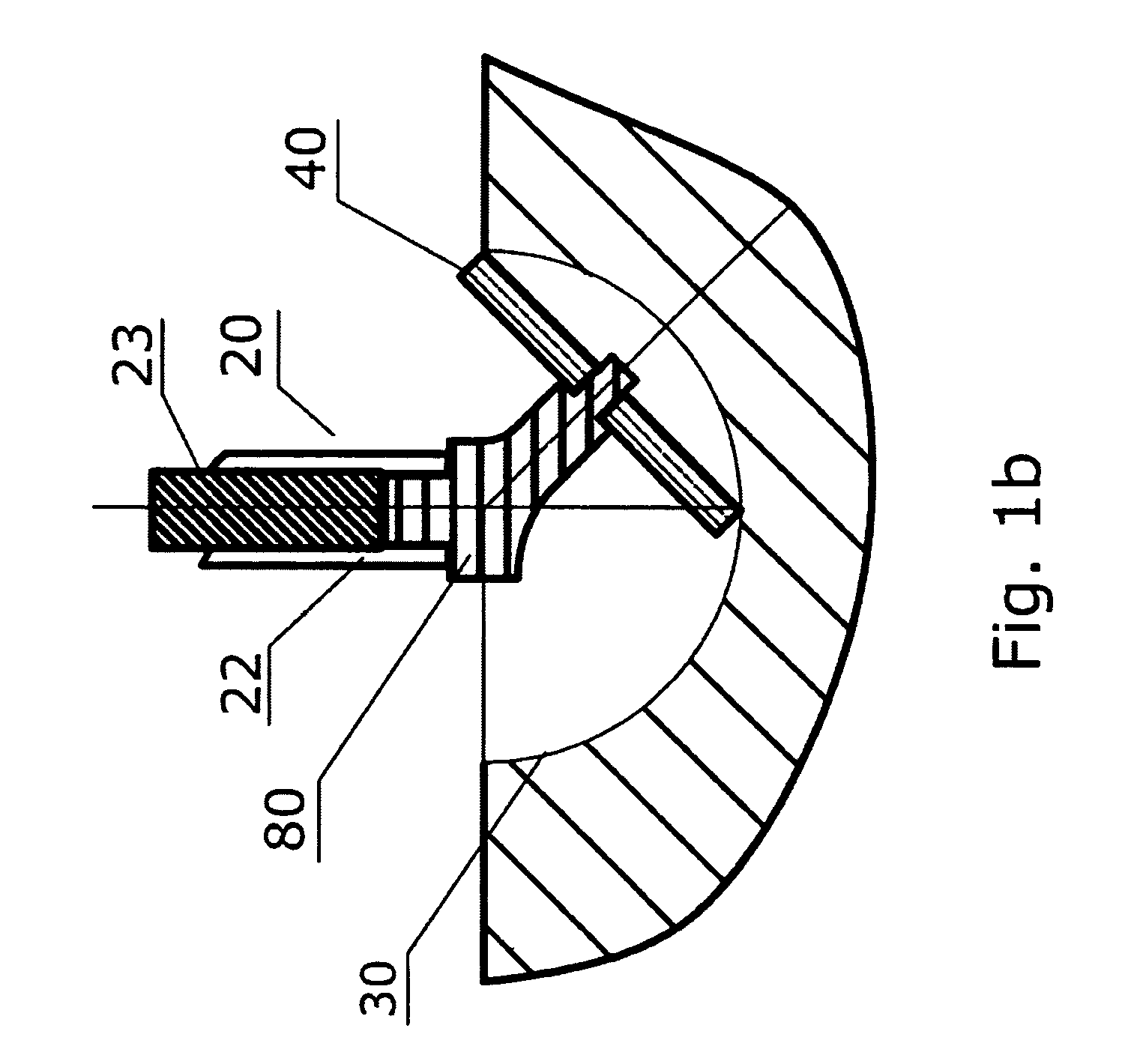Device for shaping object with a profile of at least a partial sphere
a technology a device, which is applied in the field of shaping a plurality of objects with a profile of at least a partial sphere, can solve the problems of increased manufacturing costs, increased manufacturing costs, and increased manufacturing costs, and achieves less insertion profiles, small size, and simple structure
- Summary
- Abstract
- Description
- Claims
- Application Information
AI Technical Summary
Benefits of technology
Problems solved by technology
Method used
Image
Examples
Embodiment Construction
[0028]Referring now to the drawings, and more particularly to FIG. 1a, there is a sketch drawing of the geometrical principle of the reamer and defined parameters and definitions used on describing the invention are:
DEFINITION
[0029]Primary axis 1: the rotary axis of the reamer and also corresponding to the polar axis of the sphere sought to be cut.
[0030]Secondary axis 2: the axis passes through the circular center of the cutting edge and corresponds to the spinning axis of the cutting element.
[0031]Virtual center 3 of the reamer assembly or of the featured frame: the intersection point of the primary axis with the secondary axis of each cutting element and also conforms to the center point of the sphere sought to be reamed.
[0032]Apex point of reamer assembly 4: the lowest point of the reamer assembly, and equivalent to the polar point of the sphere sought to be reamed.
[0033]Equatorial circle 5: the horizontal circle / plane of the reamer assembly with a center at the virtual center an...
PUM
 Login to View More
Login to View More Abstract
Description
Claims
Application Information
 Login to View More
Login to View More - R&D
- Intellectual Property
- Life Sciences
- Materials
- Tech Scout
- Unparalleled Data Quality
- Higher Quality Content
- 60% Fewer Hallucinations
Browse by: Latest US Patents, China's latest patents, Technical Efficacy Thesaurus, Application Domain, Technology Topic, Popular Technical Reports.
© 2025 PatSnap. All rights reserved.Legal|Privacy policy|Modern Slavery Act Transparency Statement|Sitemap|About US| Contact US: help@patsnap.com



